Abstract
Behavioral end points for neurotoxicity risk assessment have been developed and examined over the past three decades. They are now ready to move from simple qualitative guidelines, such as exemplified by reference doses, to more quantitative models, such as benchmark doses, based on dose-response information. Risk assessors, confronted by a wider array of methodologies and data than in the past, should be offered guidance in interpretation because now they have to deal with unaccustomed questions and problems. These include reversibility, susceptible populations, multiple end points, and the details of dose-response and dose-effect distributions.
Full text
PDF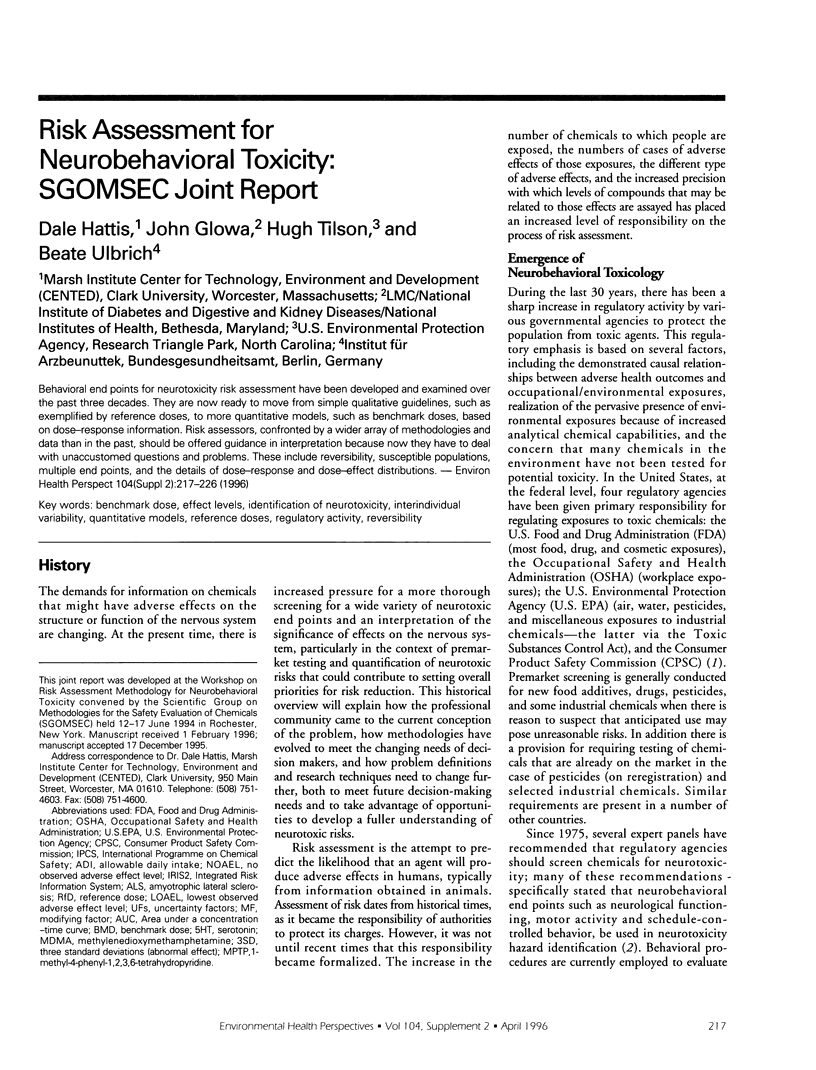
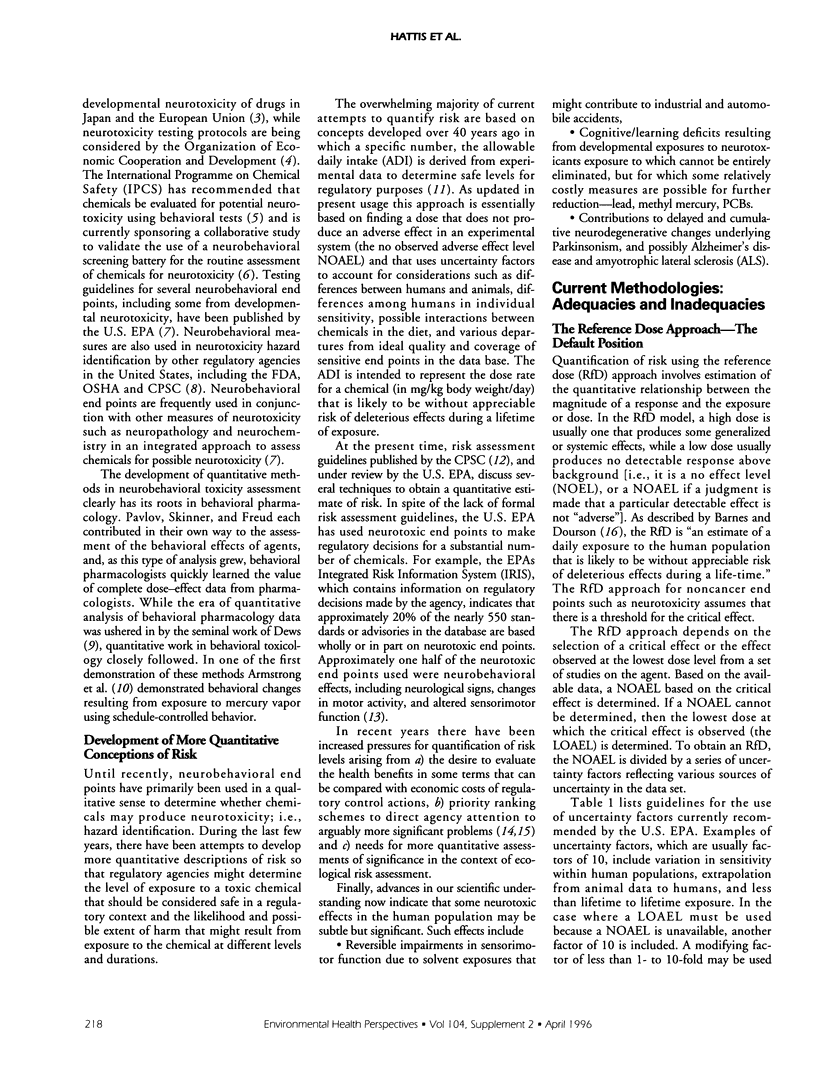
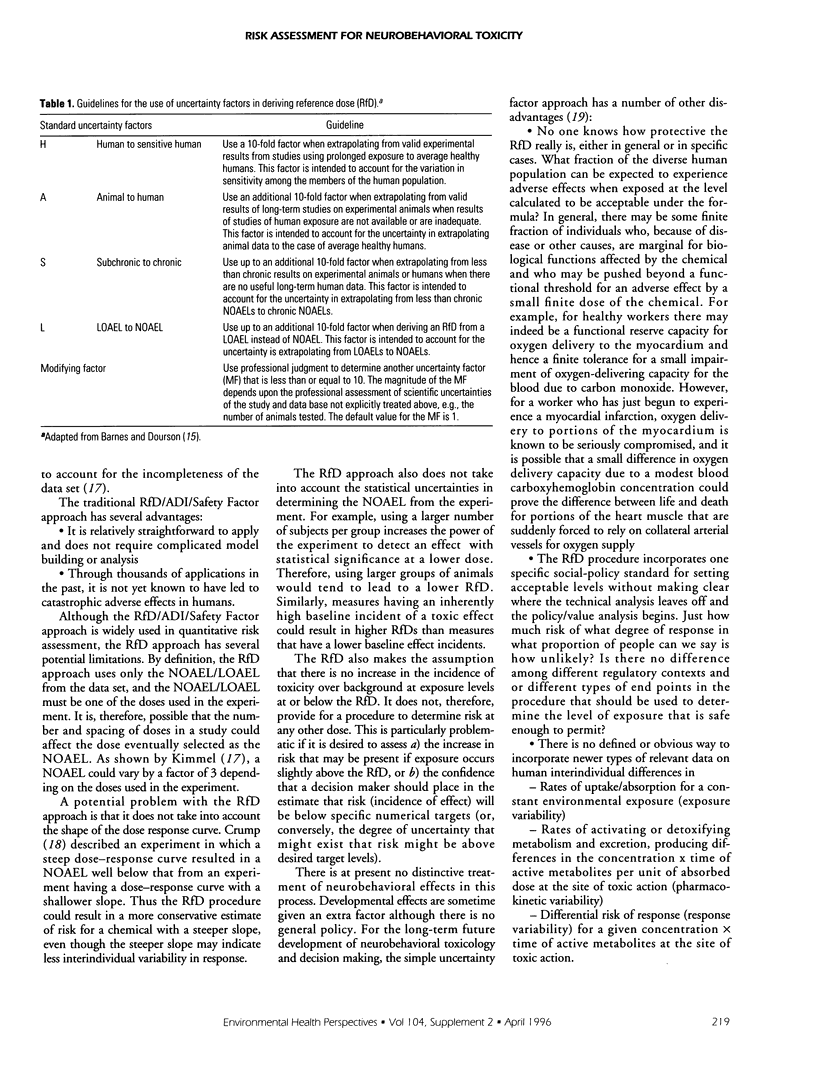
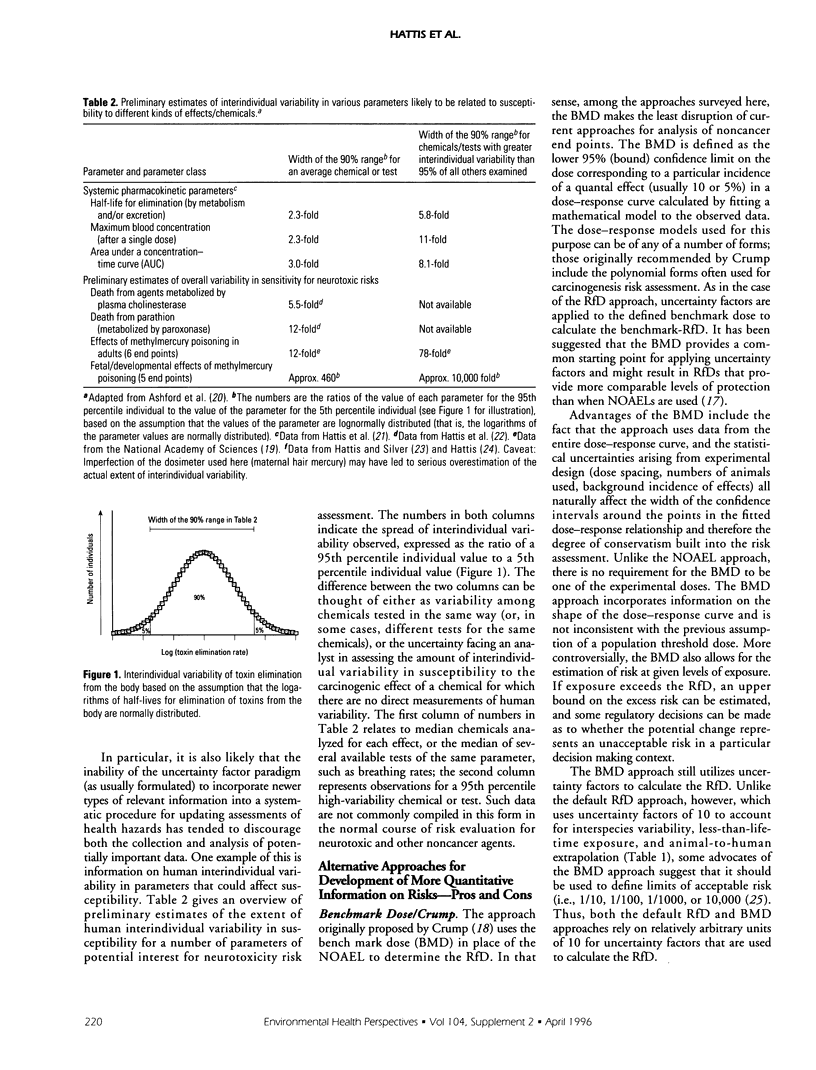
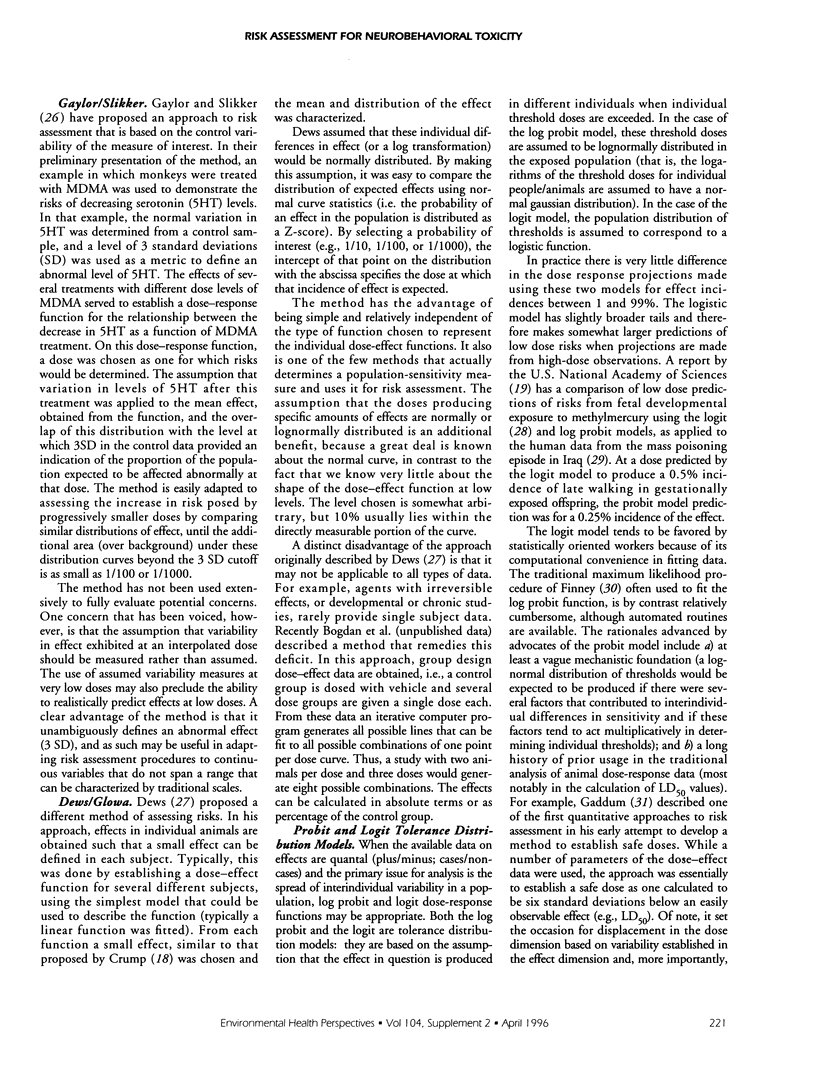
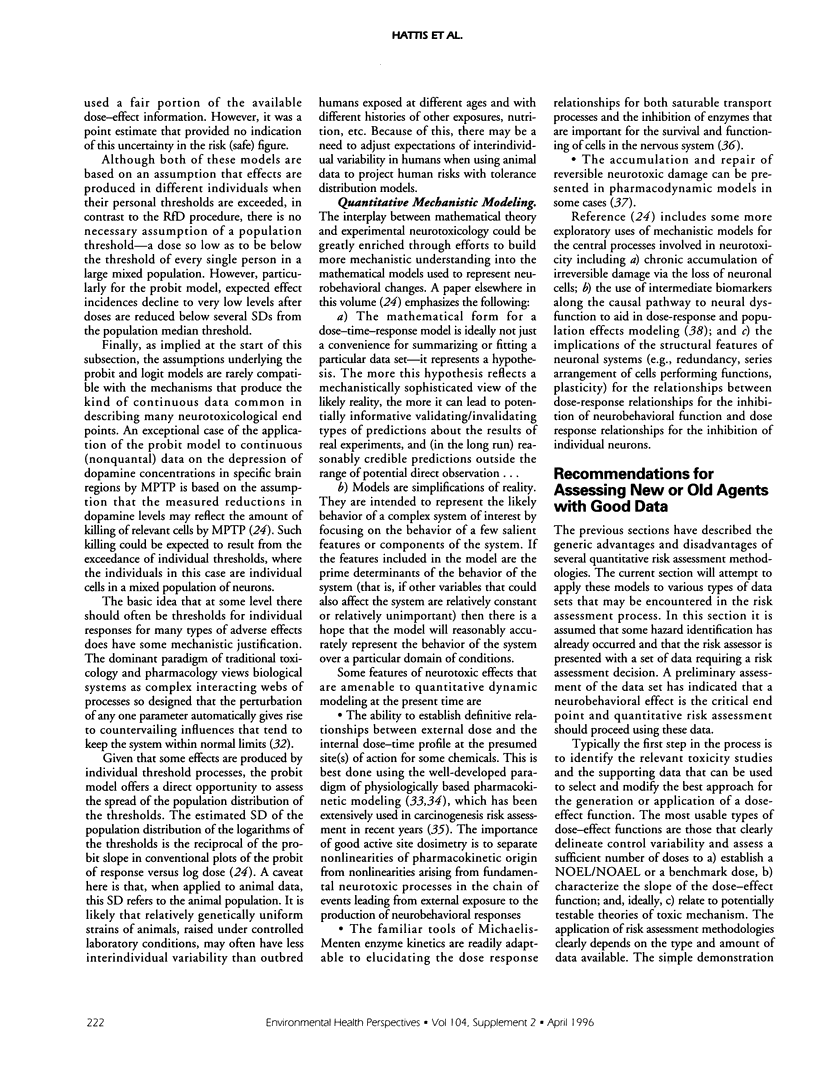
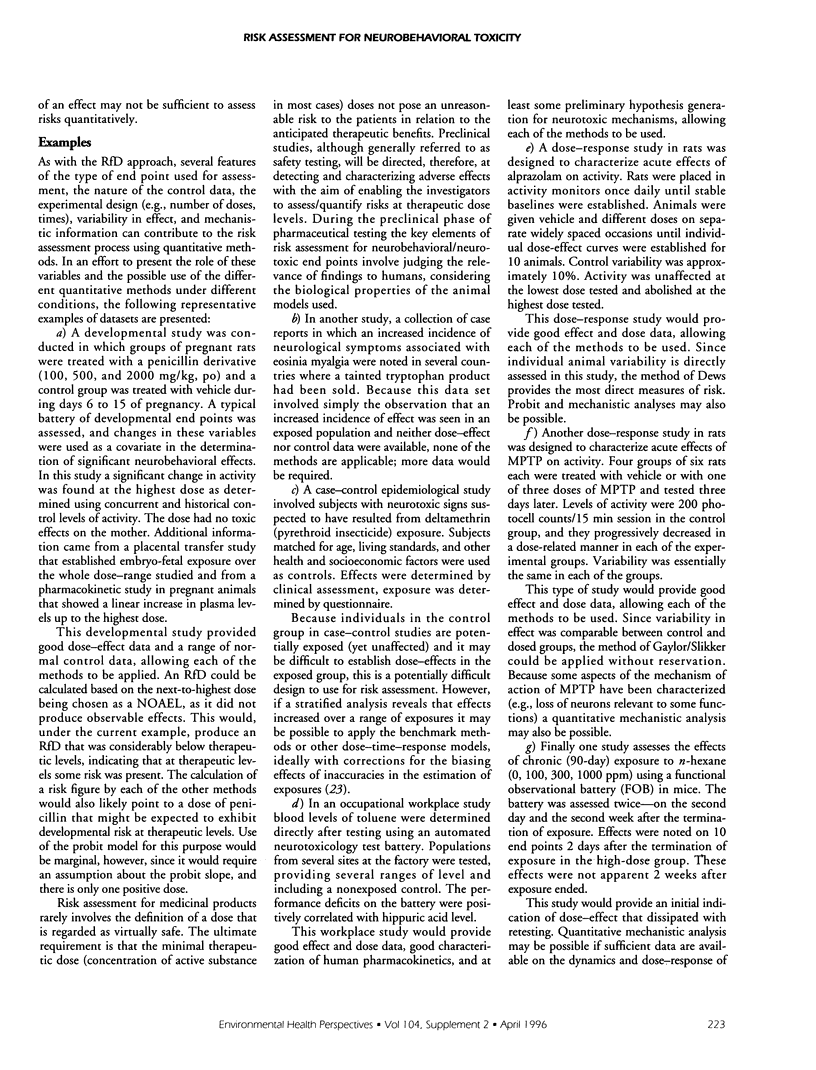
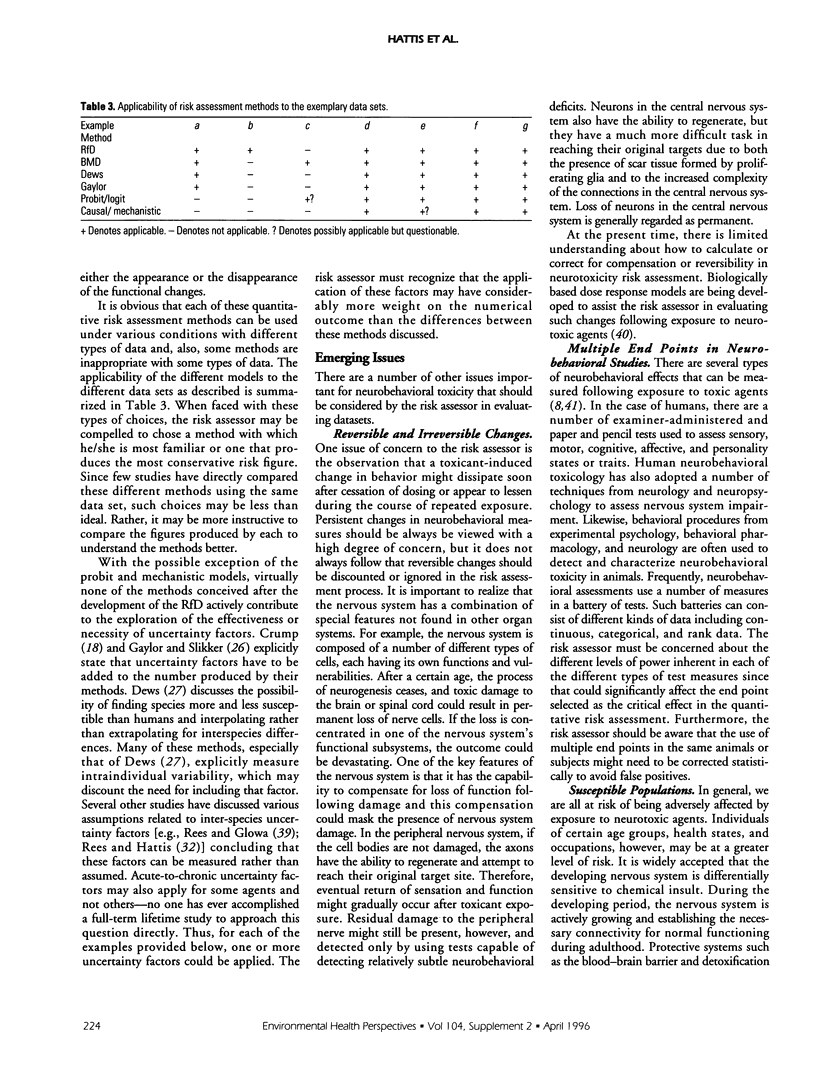
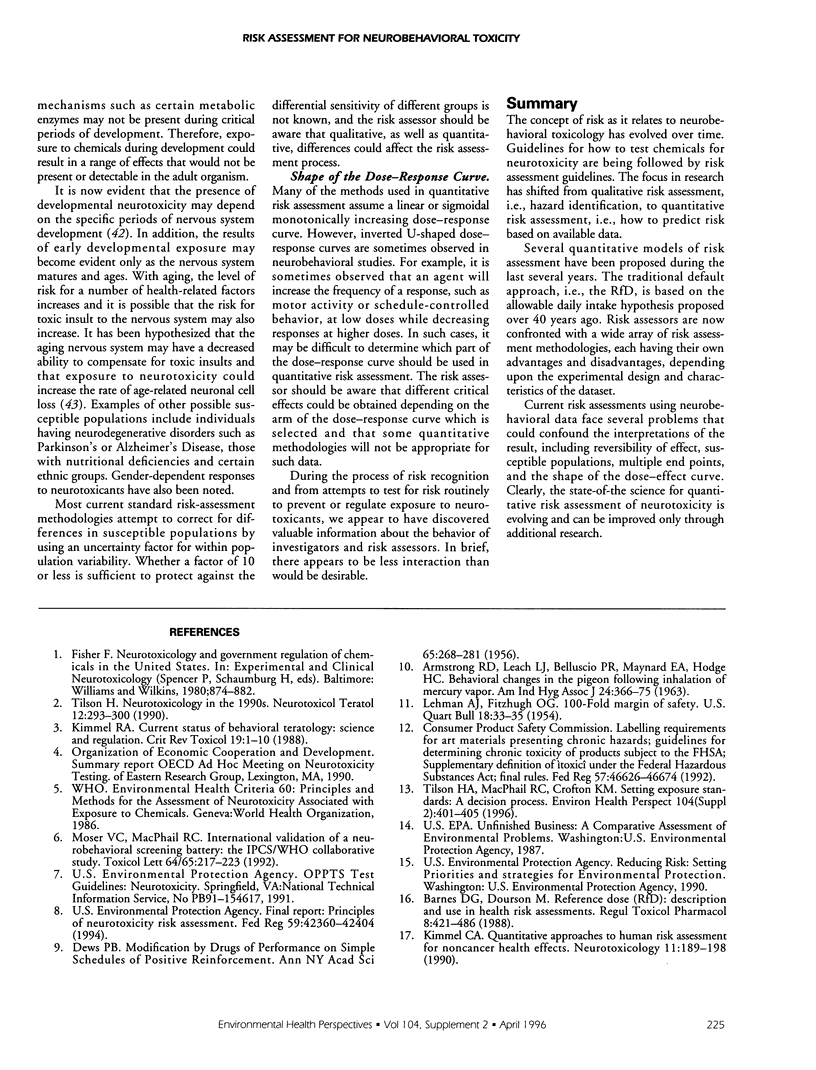
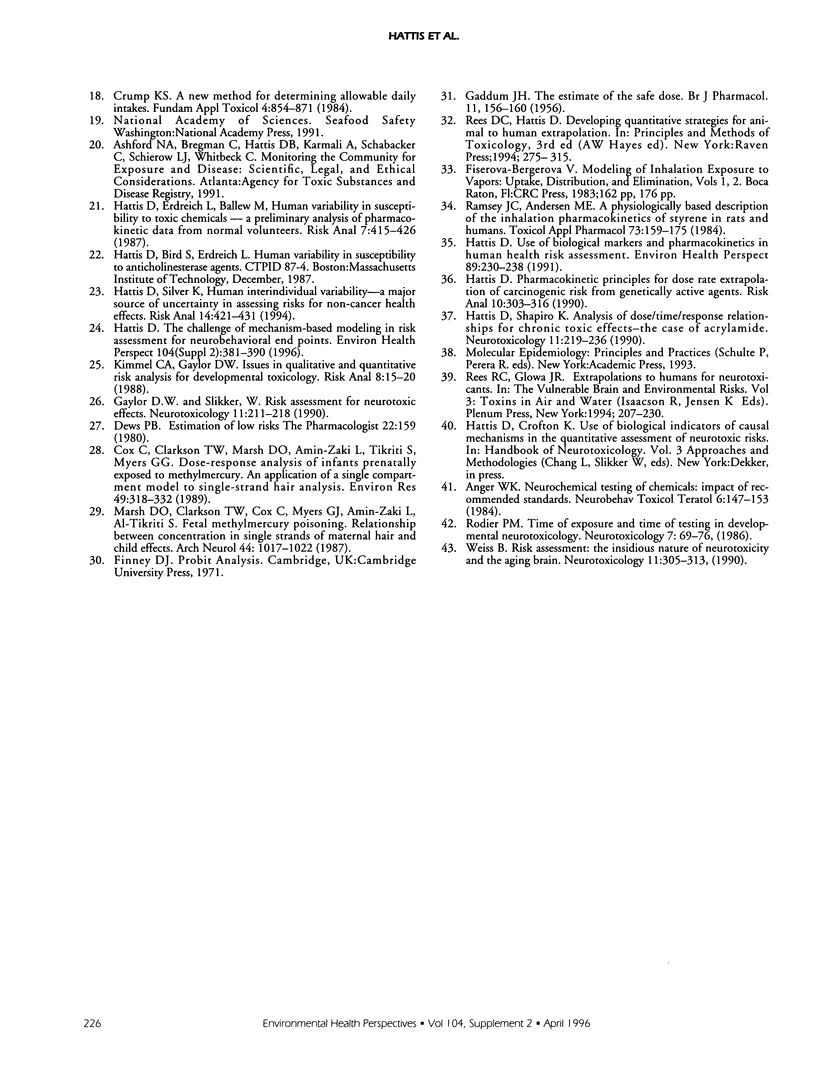
Selected References
These references are in PubMed. This may not be the complete list of references from this article.
- ARMSTRONG R. D., LEACH L. J., BELLUSCIO P. R., MAYNARD E. A., HODGE H. C., SCOTT J. K. BEHAVORIAL CHANGES IN THE PIGEON FOLLOWING INHALATION OF MERCURY VAPOR. Am Ind Hyg Assoc J. 1963 Jul-Aug;24:366–375. doi: 10.1080/00028896309343231. [DOI] [PubMed] [Google Scholar]
- Anger W. K. Neurobehavioral testing of chemicals: impact on recommended standards. Neurobehav Toxicol Teratol. 1984 Mar-Apr;6(2):147–153. [PubMed] [Google Scholar]
- Barnes D. G., Dourson M. Reference dose (RfD): description and use in health risk assessments. Regul Toxicol Pharmacol. 1988 Dec;8(4):471–486. doi: 10.1016/0273-2300(88)90047-5. [DOI] [PubMed] [Google Scholar]
- Cox C., Clarkson T. W., Marsh D. O., Amin-Zaki L., Tikriti S., Myers G. G. Dose-response analysis of infants prenatally exposed to methyl mercury: an application of a single compartment model to single-strand hair analysis. Environ Res. 1989 Aug;49(2):318–332. doi: 10.1016/s0013-9351(89)80075-1. [DOI] [PubMed] [Google Scholar]
- Crump K. S. A new method for determining allowable daily intakes. Fundam Appl Toxicol. 1984 Oct;4(5):854–871. doi: 10.1016/0272-0590(84)90107-6. [DOI] [PubMed] [Google Scholar]
- DEWS P. B. Modification by drugs of performance on simple schedules of positive reinforcement. Ann N Y Acad Sci. 1956 Nov 2;65(4):268–281. doi: 10.1111/j.1749-6632.1956.tb49639.x. [DOI] [PubMed] [Google Scholar]
- GADDUM J. H. The estimation of the safe dose. Br J Pharmacol Chemother. 1956 Jun;11(2):156–160. doi: 10.1111/j.1476-5381.1956.tb01046.x. [DOI] [PMC free article] [PubMed] [Google Scholar]
- Gaylor D. W., Slikker W., Jr Risk assessment for neurotoxic effects. Neurotoxicology. 1990 Summer;11(2):211–218. [PubMed] [Google Scholar]
- Hattis D., Erdreich L., Ballew M. Human variability in susceptibility to toxic chemicals--a preliminary analysis of pharmacokinetic data from normal volunteers. Risk Anal. 1987 Dec;7(4):415–426. doi: 10.1111/j.1539-6924.1987.tb00479.x. [DOI] [PubMed] [Google Scholar]
- Hattis D. Pharmacokinetic principles for dose-rate extrapolation of carcinogenic risk from genetically active agents. Risk Anal. 1990 Jun;10(2):303–316. doi: 10.1111/j.1539-6924.1990.tb01051.x. [DOI] [PubMed] [Google Scholar]
- Hattis D., Shapiro K. Analysis of dose/time/response relationships for chronic toxic effects: the case of acrylamide. Neurotoxicology. 1990 Summer;11(2):219–236. [PubMed] [Google Scholar]
- Hattis D., Silver K. Human interindividual variability--a major source of uncertainty in assessing risks for noncancer health effects. Risk Anal. 1994 Aug;14(4):421–431. doi: 10.1111/j.1539-6924.1994.tb00260.x. [DOI] [PubMed] [Google Scholar]
- Hattis D. The challenge of mechanism-based modeling in risk assessment for neurobehavioral end points. Environ Health Perspect. 1996 Apr;104 (Suppl 2):381–390. doi: 10.1289/ehp.96104s2381. [DOI] [PMC free article] [PubMed] [Google Scholar]
- Hattis D. Use of biological markers and pharmacokinetics in human health risk assessment. Environ Health Perspect. 1991 Jan;90:229–238. doi: 10.1289/ehp.90-1519499. [DOI] [PMC free article] [PubMed] [Google Scholar]
- Kimmel C. A. Current status of behavioral teratology: science and regulation. Crit Rev Toxicol. 1988;19(1):1–10. doi: 10.3109/10408448809040814. [DOI] [PubMed] [Google Scholar]
- Kimmel C. A., Gaylor D. W. Issues in qualitative and quantitative risk analysis for developmental toxicology. Risk Anal. 1988 Mar;8(1):15–20. doi: 10.1111/j.1539-6924.1988.tb01149.x. [DOI] [PubMed] [Google Scholar]
- Kimmel C. A. Quantitative approaches to human risk assessment for noncancer health effects. Neurotoxicology. 1990 Summer;11(2):189–198. [PubMed] [Google Scholar]
- Marsh D. O., Clarkson T. W., Cox C., Myers G. J., Amin-Zaki L., Al-Tikriti S. Fetal methylmercury poisoning. Relationship between concentration in single strands of maternal hair and child effects. Arch Neurol. 1987 Oct;44(10):1017–1022. doi: 10.1001/archneur.1987.00520220023010. [DOI] [PubMed] [Google Scholar]
- Moser V. C., MacPhail R. C. International validation of a neurobehavioral screening battery: the IPCS/WHO collaborative study. Toxicol Lett. 1992 Dec;64-65 Spec No:217–223. doi: 10.1016/0378-4274(92)90192-m. [DOI] [PubMed] [Google Scholar]
- Ramsey J. C., Andersen M. E. A physiologically based description of the inhalation pharmacokinetics of styrene in rats and humans. Toxicol Appl Pharmacol. 1984 Mar 30;73(1):159–175. doi: 10.1016/0041-008x(84)90064-4. [DOI] [PubMed] [Google Scholar]
- Rodier P. M. Time of exposure and time of testing in developmental neurotoxicology. Neurotoxicology. 1986 Summer;7(2):69–76. [PubMed] [Google Scholar]
- Tilson H. A., MacPhail R. C., Crofton K. M. Setting exposure standards: a decision process. Environ Health Perspect. 1996 Apr;104 (Suppl 2):401–405. doi: 10.1289/ehp.96104s2401. [DOI] [PMC free article] [PubMed] [Google Scholar]
- Tilson H. A. Neurotoxicology in the 1990s. Neurotoxicol Teratol. 1990 Jul-Aug;12(4):293–300. doi: 10.1016/0892-0362(90)90046-f. [DOI] [PubMed] [Google Scholar]
- Weiss B. Risk assessment: the insidious nature of neurotoxicity and the aging brain. Neurotoxicology. 1990 Summer;11(2):305–313. [PubMed] [Google Scholar]


